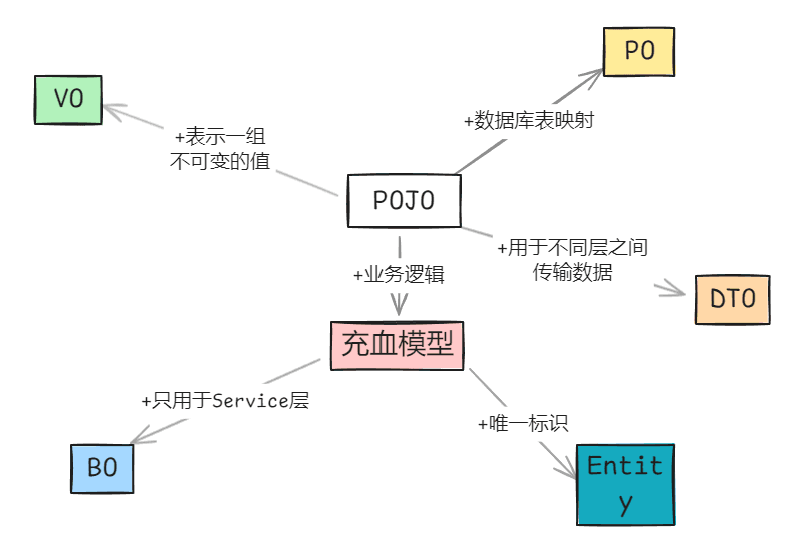When I encountered these messy data models, I was really confused. The architecture design was also chaotic, and I didn't know how to derive the corresponding package names based on the data models. I also browsed various materials online, but no one explained it in a straightforward manner, so I 整理了一下 based on my experience.

POJO【plain old java object】 Ordinary Java Object, can serve as the foundation for other data modelsVO【value object】: A value object is an immutable object, without a unique ID identifier, used to represent a set of values【which means if two value objects have the same properties, they are equal】- Can include simple business logic operations
- VO usually overrides the equals and hashCode methods for value-based comparisons
PO / Entity【Entity】: An entity must have a unique ID identifier, which means if two Entities have the same property values, they are not equal; PO is a Java object that maps to a database table【so PO and Entity can be considered the same concept】DTO【data transfer object】: DTO is used to transfer data between different layers- Does not contain any business logic
Rich model: Rich model = PO + business logic,if a PO contains business logic, then it is a rich modelBO【Business object】: A business object contains business logic- Used only in the Service layer